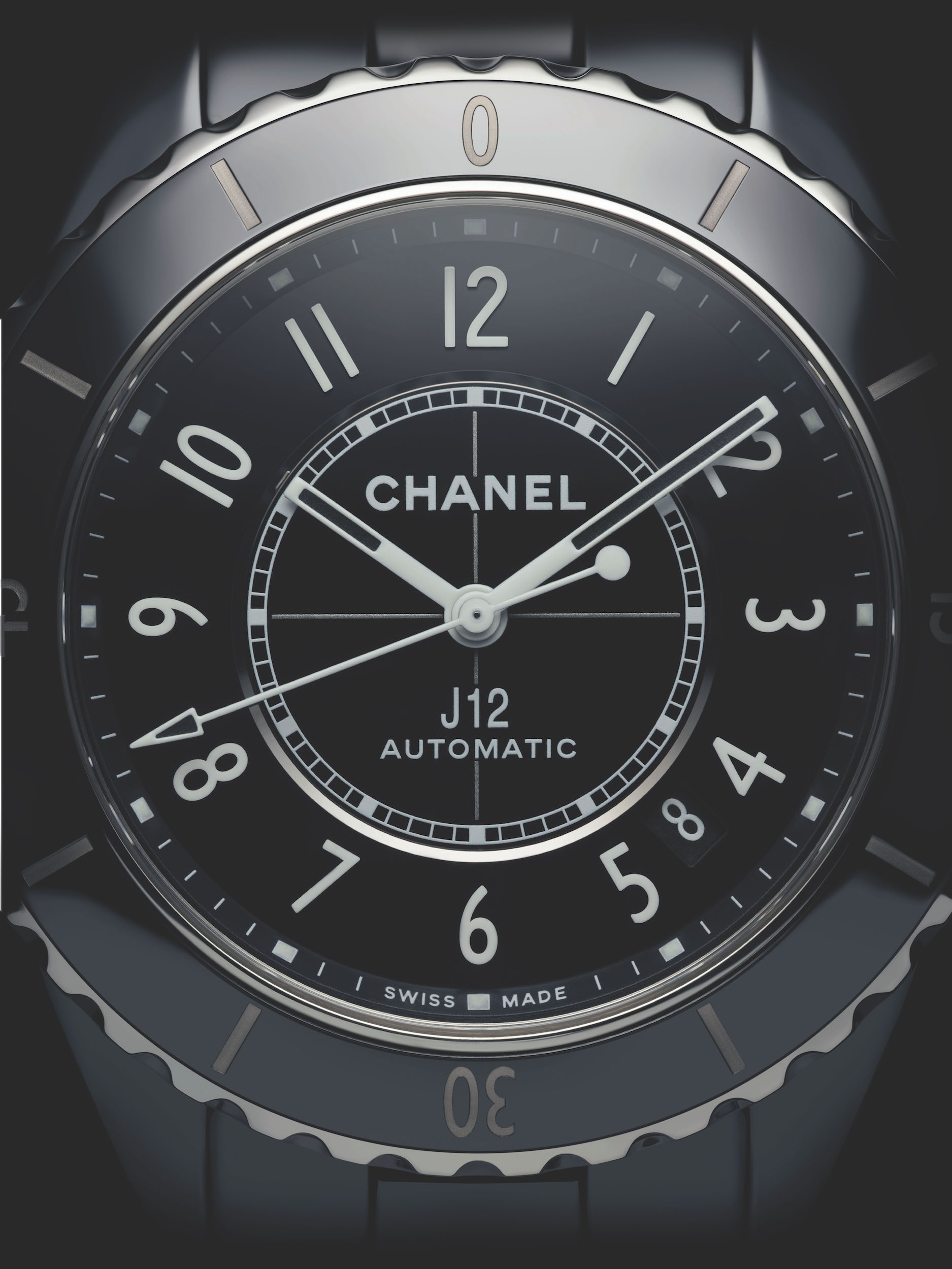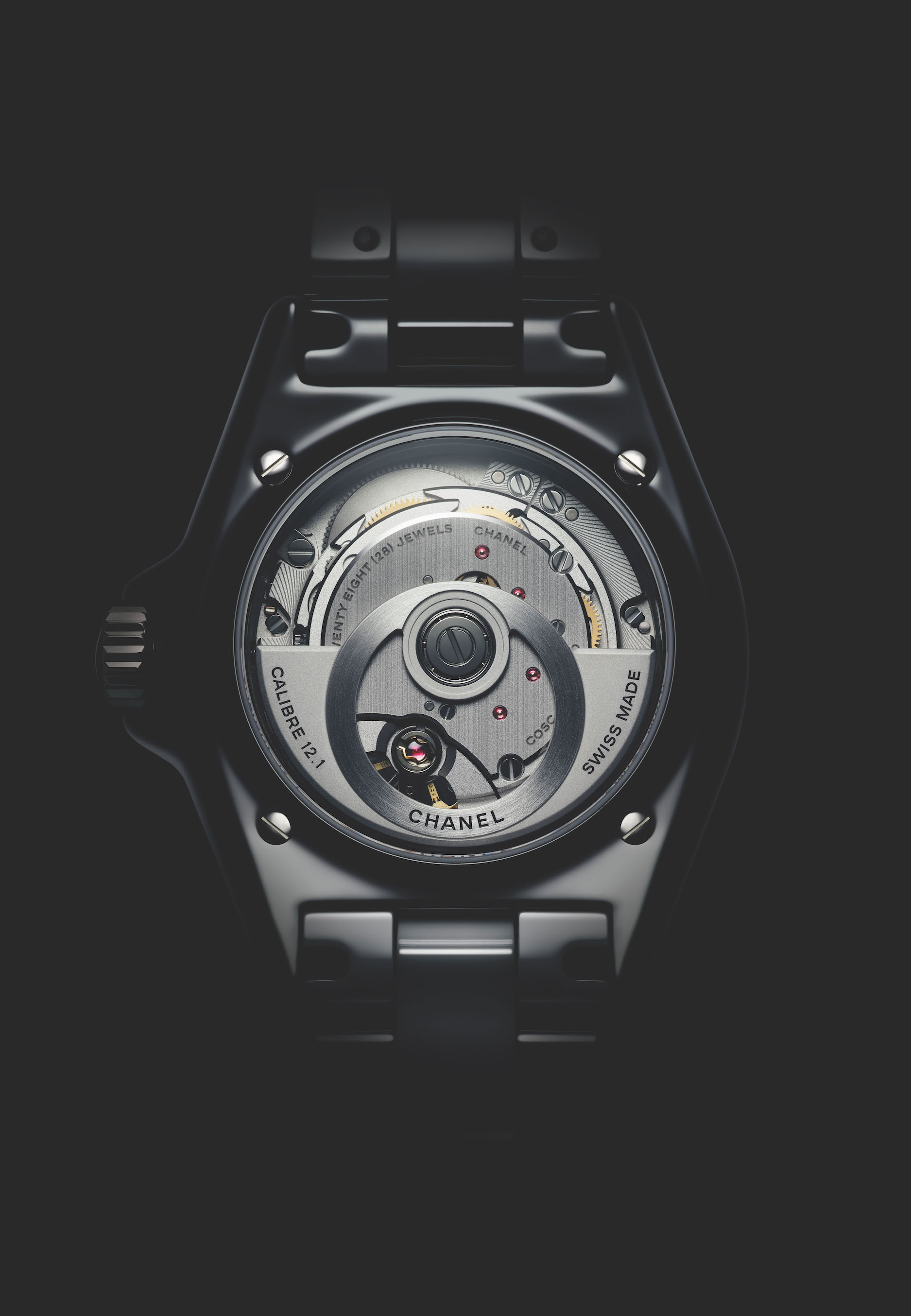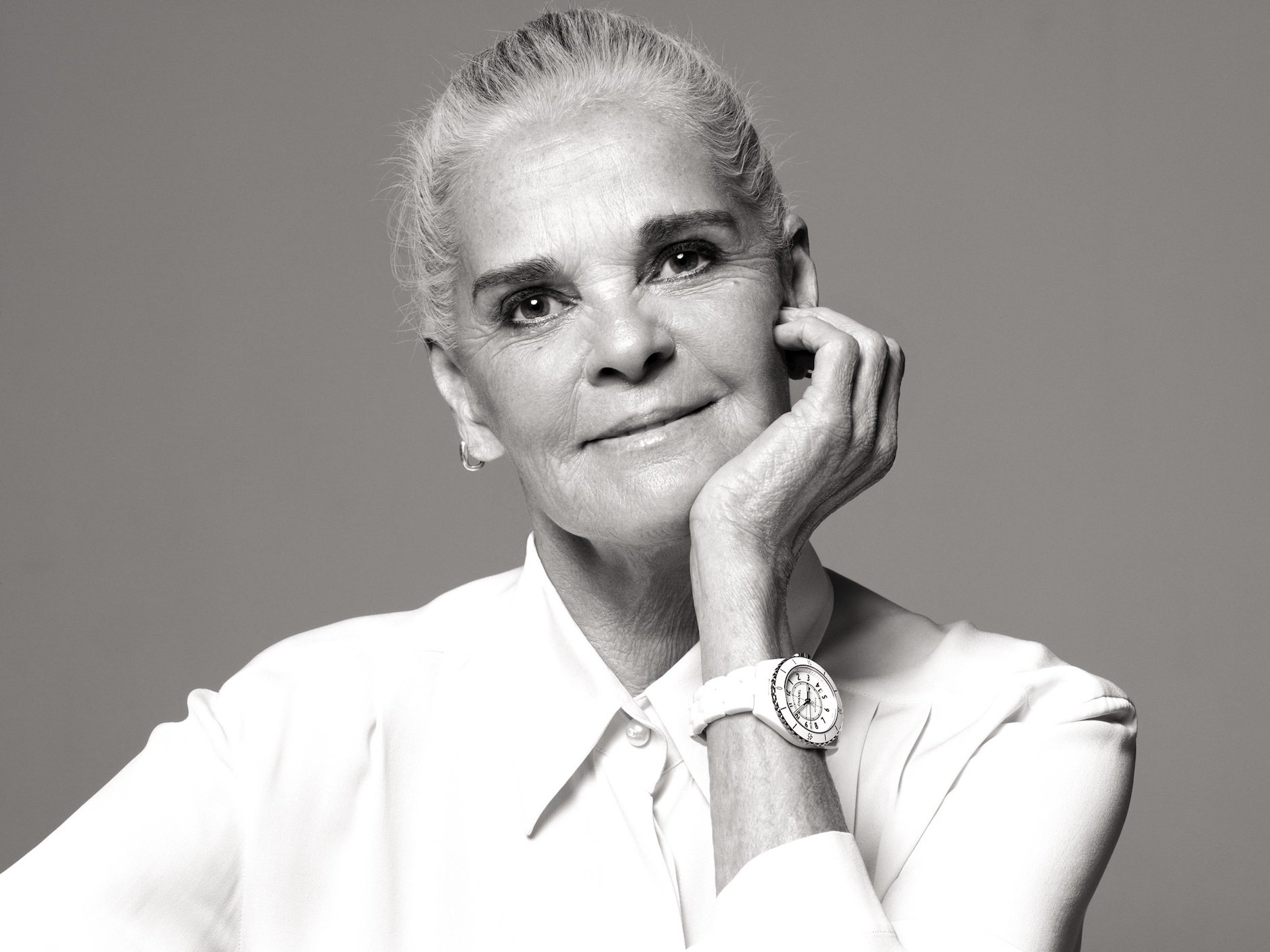Twenty years ago, Jacques Helleu, artistic director of Chanel, conceived of an icon. Designing a new wristwatch for himself, Helleu found inspiration in an unlikely source: racing sailboats. It was a far cry from Coco’s trademark camellia blossoms, chains, and strands of pearls. But he was enamored of J-Class yachts, the gorgeous single-mast rigs that dominated America’s Cup during the 1930s. They heavily influenced the watch’s now-legendary nautical look. They also provided a winking reference in the timepiece’s name: Chanel J12. (The “12” indicating the length, in feet, of the boats found in the J class.)
But like yacht racing, and all things high-performance luxury, Helleu’s design does not exist outside of bounds of progress and evolution. So now the J12 has been redesigned, entirely, if subtly, from the inside out. This process required years of work and planning, but not that you’d notice. At first glance, the most revolutionary element of this radical transformation isn’t even visible.
“There are a lot of icons in this company,” says Arnaud Chastaingt, director of the Chanel Watch Creation Studio, who spearheaded the new J12 project. By way of example, he points to the N°5 perfume bottle and Gabrielle and 2.55 bags. Chastaingt considers the J12 to be in that same class of identity-defining luxury accessory. But he doesn’t see the company’s pedigree as an impediment. According to him, “when you work for Chanel as a designer in charge of creation, you are absolutely free to create what you want.”
Chastaingt speaks from experience. Since 2013, he has designed several new timepieces, including Monsieur de Chanel (the brand’s first-ever men’s wristwatch), the Code Coco (named for the founder, a bold statement in and of itself), and the Première Camélia Skeleton (which won an award at GPHG, fine watchmaking’s version taking home an Oscar). Still, he allows that reimagining Helleu’s classic J12 required an especially delicate touch.
“For this project, in my head, I needed to find my place within this redesign concept. I had to work more like a surgeon than a designer,” says Chastaingt. “I had to be modest and approach the project with great humility. I had to analyze this watch—scan every detail.”
That only pushed him to start smaller, to dig deeper into the watch’s finer points, seeing how much impact could be made by simply tweaking the details.
“Working with the bezel was the first step of my work on this project. I was a little bit obsessed about the size of the notches,” he says. The solution came in increasing the total number of notches, from 30 to 40, which made each smaller, while also allowing him to better evaluate the rest of the design. “I also found the watch a little wide. I immediately made it thinner, reduced it, and at the same time, I changed the proportion.”
Still, Chastaingt remained mindful of the watch’s history, and Chanel’s classic aesthetic. House codes were taken into great consideration, from the typeface, which was designed by the Chanel Creation Studio, to the placement of “Automatic” and “Swiss Made” inscriptions and lacquering on the dial, a specialty of the Maison. Keeping with tradition, the one-piece case is still ceramic, still available in either black or white. But flip it over, and you’ll find a transparent sapphire crystal caseback, revealing the aforementioned revolutionary element.
It offers a look inside the J12, which now houses a 12.1-calibre movement, developed in-house by the new Kenissi Manufacture, and created exclusively for Chanel by Chanel. The movement and, indeed, the entire Kenissi watchmaking operation, is the product of a remarkable new partnership between two of the world’s most powerful independent luxury groups: Chanel and the Tudor arm of the Rolex Group.
Nicolas Beau, international business development watch and fine jewelry director for Chanel, explains the decision thusly: “Rolex is rather big—they’ll never be purchased. They are very secret, so we had lots in common. When the J12 was first developed, Chanel was purchasing outside movements, and in the process, we began thinking about how we can master manufacturing for ourselves. The technology of this group [Rolex] is one of the best in the world. So we talked, we met, and we decided to purchase a share of the company,” he says.
“When it comes to making a mechanical movement like this one, which is not about producing fifty movements per year, but a few thousand, you need to be highly inquisitive, very robust, and very luxurious,” Beau explains. “We can say now that we are fully independent in watchmaking, from the case to the movement, and going forward that gives us the power and independence to work on our own calibres and gives us the freedom to create whatever movements we want.”
That freedom will be a boon for Chanel designers for years to come. Chastaingt, for his part, is already enjoying the benefits. Between the updates to Jacques Helleu’s original vision, and the robust Kenissi internals, he feels that this latest timepiece is primed to be a modern classic.
“It’s not a new J12,” Chastaingt says. “It’s the J12 of today, tomorrow, and forever.”


